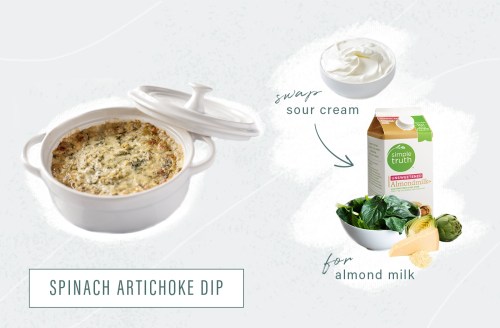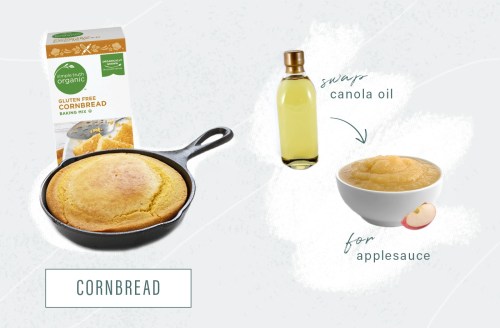Food is arguably the best part of the holidays, but making sure the menu caters to your specific dietary preferences (especially when you’ve got lots of them) can feel like a lost cause.
Good news: Partaking in the holiday smorgasbord doesn’t require swearing off all your festive faves or accepting an impending stomach ache—because we polled Well+Good staffers to find out how they turn classic meals into healthy holiday recipes with just a few tweaks.
And no, you don’t have to hit up obscure health-food stores to find the ingredients, because they’re all available at your closest Kroger. Our editors’ top tip? Opt for organic ingredients whenever possible to give a little extra health boost to any dish—yes, even desserts—and try keeping recipes as simple as possible (shout out Kroger Simple Truth® foods for making organic and natural options more accessible).
Scroll down to find out the simple ingredient swaps Well+Good staffers use to up the health factor of their fave holiday recipes.

“My family’s biggest holiday tradition is the monstrous appetizer spread before our meal. You can always find a bowl of spinach and artichoke dip somewhere in the room, so I try to give this one a healthier spin by keeping it to only five ingredients: spinach, kale, almond milk, and nut-based shredded cheese. Just mix it together, pop it in the oven, and this dish stays classic even when it goes dairy-free!” — Lexi Chianese, Sales + Marketing Assistant

“Growing up, my mom was really great about finding healthy hacks to boost the nutrition of the food she made for me and my siblings. One of the ones that stuck with me was using applesauce as an oil replacement in breads and cakes. Now as an adult, I like to use that swap when I make cornbread as a holiday side dish. It makes any cake light and fluffy, and I promise there is no lingering apple taste!” — Abby Maker, Graphic Designer

“Dessert will forever be my favorite part of any meal, especially when there are brownies involved. To avoid the food coma that often follows and to accommodate my family members with Celiac, I’ve been experimenting with black bean or chickpea brownies. I know, I know, but just hear me out.
Black beans make a really great substitute for butter by following a 1:1 ratio (or if you’re using chickpea flour, just add two pasture-raised eggs). You really can’t taste the difference! Plus, they add a kick of protein and fiber. Win-win.” — Melanie Lewis, Ad Operations Coordinator
In partnership with Kroger Family of Stores
Top photo: Stocksy/Lumina
Graphics: W+G Creative
Sign Up for Our Daily Newsletter
Get all the latest in wellness, trends, food, fitness, beauty, and more delivered right to your inbox.
Got it, you've been added to our email list.





